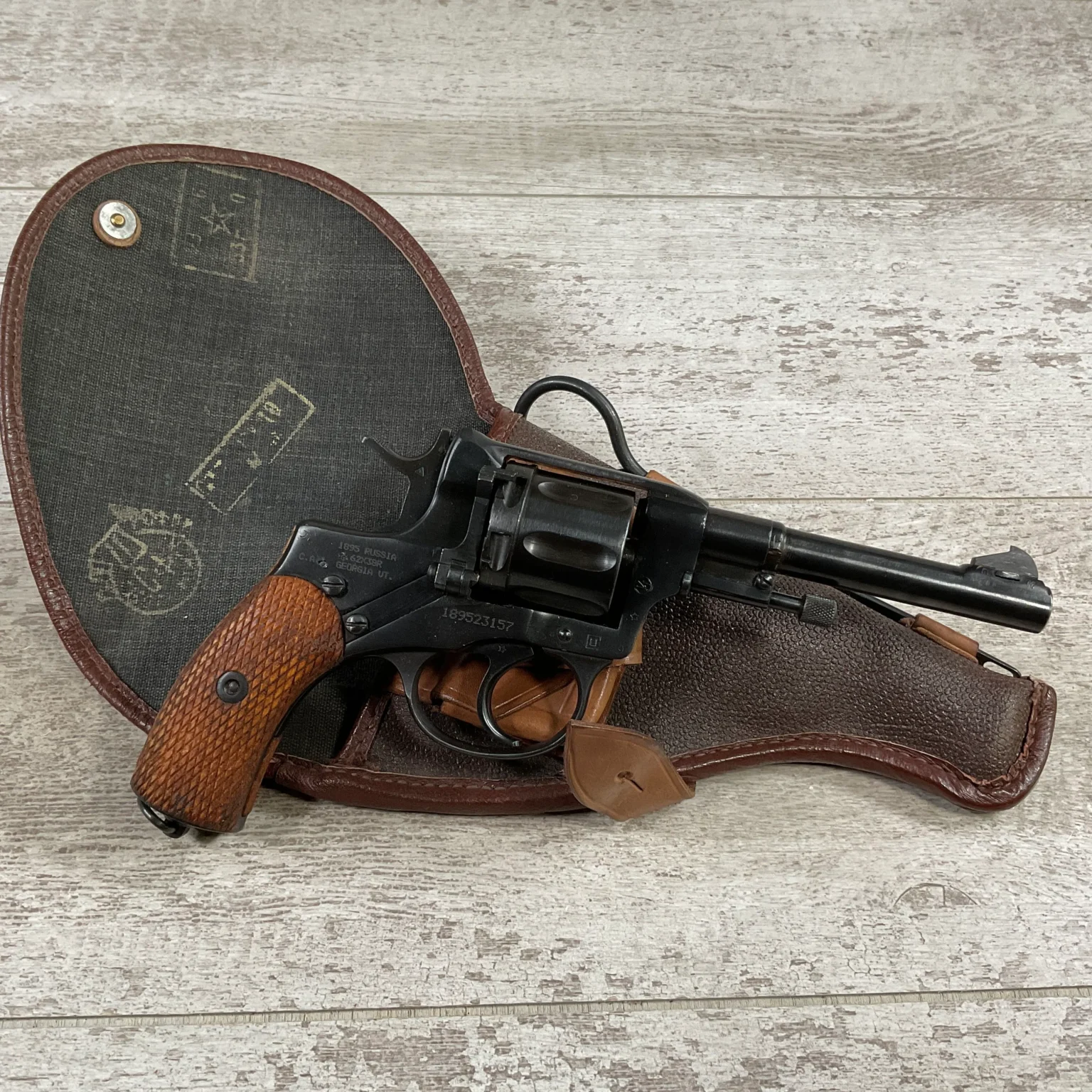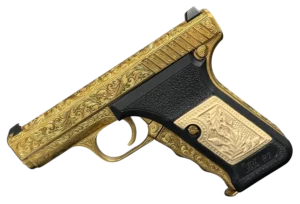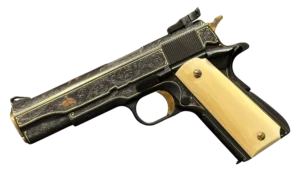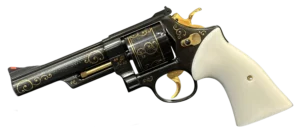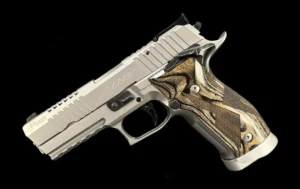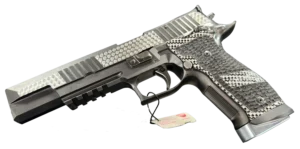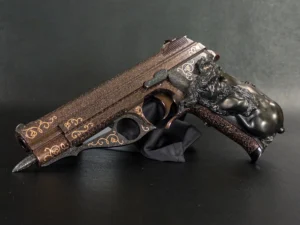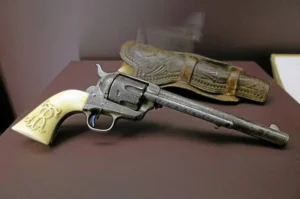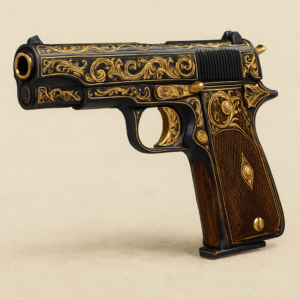Key Takeaways:
- These revolvers aren’t just cold steel—they’re cultural snapshots: Each firearm in this list represents more than firepower. Whether it’s the British Bulldog’s street-level grit or the French Lebel’s elegant precision, these weapons reflect the national character, historical context, and human needs that brought them to life.
- Simplicity, elegance, or innovation—each revolver earned its place by doing one thing exceptionally well: From the rugged utility of the Bodeo to the quirky brilliance of the Nagant’s gas-seal system, these models didn’t try to be everything at once. They found a niche, nailed it, and stayed because it worked when it mattered most.
- The stories behind these sidearms matter just as much as their specs: Collectors and historians don’t just admire these revolvers for their mechanics—they value the lived experiences etched into their frames. Every scratch and scuff speaks of battles fought, lives defended, and the cultures that depended on them.
Walk through the corridors of European history, and you’ll find more than just kings, battles, and political revolutions—you’ll find revolvers. Not just any firearms, but symbols of national pride, personal defense, military grit, and mechanical genius. Europe didn’t just manufacture weapons; it sculpted them into instruments of survival, authority, and at times, legend.
We’re not here to rattle off specs. These five European revolvers didn’t just fire bullets—they sparked cultural shifts, challenged design norms, and carved their place into history. So, let’s take a more human look at the stories behind them.
The British Bulldog: Small Frame, Big Attitude
Have you ever heard the phrase “don’t judge a book by its cover”? That’s the British Bulldog in a nutshell.
This pocket-sized powerhouse came out of Victorian Britain like a street-smart bruiser in a tailored suit. It wasn’t flashy, and it sure didn’t boast long-range finesse—but what it did have was raw, close-quarters stopping power packed into a frame that fit inside a waistcoat.
Popular with civilians, police, and even a few shady characters, the Bulldog wasn’t designed for long-drawn gunfights. It was for that moment—up close, unexpected, and decisive. With its snub-nose barrel and wide-bore cylinder, it earned a reputation as a no-nonsense defender.
And let’s be honest, part of its lasting appeal? The aura. Think of foggy London streets, horse-drawn carriages, detectives in bowler hats—the Bulldog practically comes with its own soundtrack.
Its mechanical simplicity meant it was easy to use and just as easy to conceal. You didn’t need to be a soldier or a seasoned shooter. You just needed the nerve to carry it—and the will to use it if things got rough.
Lebel Model 1892: The Gentleman’s Sidearm
Now, if the Bulldog was the working man’s revolver, the French Lebel Model 1892 was the officer’s. It didn’t growl—it spoke with poise.
Crafted with that unmistakable French flair, the 1892 was slim, balanced, and refined. Not delicate—don’t mistake finesse for fragility. This revolver saw combat from colonial campaigns to World War I, and it held its ground. Literally.
But here’s the thing—what really made the Lebel special wasn’t just its looks. It brought real innovation to the table: a swing-out cylinder for faster reloading (a big deal back then), precision machining, and it was one of the earliest adopters of smokeless powder cartridges.
And French officers? They loved it. It was issued with pride, often privately purchased, and sometimes even engraved. The revolver became an extension of the man, equal parts style and reliability.
If you’ve ever held one, you get it. It’s not bulky. The trigger is crisp. There’s a kind of dignity to the way it handles—less “wild frontier” and more “refined resistance.”
Bodeo Model 1889: Italy’s No-Frills Fighter
Picture this: an Italian soldier marching through the dusty hills of Libya or digging trenches in the frozen Dolomites. His sidearm? Most likely the Bodeo Model 1889.
This thing wasn’t built for a ceremony or a show. It was built to survive.
The Bodeo is one of those revolvers that gets overlooked in the glamour department. But that’s the point. It wasn’t designed to impress—it was designed to work. And it did. For decades. Through two world wars and every Italian military headache in between.
Its heavy frame and shrouded hammer gave it a distinct look, and its top-break cylinder—though slower than swing-out competitors—was rugged and dependable. Maintenance was simple, and parts could take a beating.
Let’s be real: no one’s writing love letters to the Bodeo’s aesthetics. But as any grunt will tell you, when your life depends on your weapon, you stop caring about curves and start caring about clicks.
The Bodeos’s still around in collections and museums, often with worn grips and battle scars. Each scratch tells a story. And if that isn’t beauty in its own way, what is?
The Russian Nagant M1895: Weird, But Brilliant
If revolvers had personalities, the Nagant M1895 would be the eccentric genius. Quirky, clever, and surprisingly effective—just don’t expect it to be normal.
Invented by a pair of Belgian brothers but adopted by the Russian Empire, the M1895 featured something no other major revolver had: a gas-seal system. Basically, the cylinder pushed forward when fired, sealing the gap between barrel and chamber, and giving it better velocity and a tighter sound profile. Yeah, it was suppressor-friendly before that was even a buzzword.
The mechanics are fascinating (and a little convoluted), but it worked. The Nagant became a staple of Russian officers and secret police alike. It was issued to soldiers of the tsar, then later the Red Army, and even saw service into the 1950s.
If the Bulldog was a scrapper and the Lebel a gentleman, the Nagant was the cold, calculating intellectual. It wasn’t always the easiest to reload, but it thrived in extreme conditions and could take serious abuse.
Culturally, it’s just as layered. From revolutionary firing squads to Soviet-era espionage dramas, the M1895 became part of the Russian narrative, equal parts tool and symbol. It may be odd, but you’ve got to respect its ingenuity.
Reichsrevolver: Built Like a Tank
Now, we arrive at the German Reichsrevolver—arguably the most “German” revolver to ever exist. Function-first. Over-engineered. Built to outlast its wielder.
The Reichsrevolver came in two flavors (Model 1879 and 1883), both massive and—let’s not sugarcoat it—somewhat awkward to carry. These weren’t sleek sidearms. They were chunky, clunky, and single-action. But they were also dependable as hell.
Here’s the catch: By the time Germany was handing these out, most other nations had already embraced faster, more modern revolvers. Yet, the Reichsrevolver stuck around. Why? Because it worked. And once the German military committed to something, they stuck with it.
Its thick steel frame and minimalist design meant fewer breakable parts. That simplicity made it easy to fix and hard to jam—a big win in muddy trenches or chaotic cavalry charges.
Sure, the loading process was slow, and it wasn’t winning any awards for style. But it was a soldier’s revolver. No nonsense. All grit.
And honestly, there’s something kind of admirable about that. The Reichsrevolver may not be beautiful, but it’s honest. And in war, sometimes that’s exactly what you need.
Steel, Sweat, and Stories: Why These Revolvers Matter
Look, revolvers might seem quaint now—artifacts of a bygone era where sidearms settled matters up close and personal. But these five? They’re more than weapons. They’re snapshots of history, etched in steel and carried through revolutions, world wars, and decades of change.
- The Bulldog was for the man who didn’t want trouble but was ready if it came.
- The Lebel was grace under fire—stylish, deadly, and dependable.
- The Bodeo was a survivor, plain and simple.
- The Nagant was a rebel genius—a strange bird with a brilliant mind.
- The Reichsrevolver? A bulldozer in a world of sports cars.
Each one tells a different story, shaped by the culture that forged it and the hands that held it. Some were elegant. Some were ugly. All of them mattered.
Collectors prize them not just for their rarity, but for the echoes they carry—of dusty battlefields, of officers pacing behind the lines, of resistance fighters hiding in shadows.
Even today, these revolvers draw curiosity. Historians study them. Gun lovers restore them. And every once in a while, someone picks one up, feels its weight, and imagines what it must’ve meant to carry it not as a relic—but as a lifeline.
Frequently Asked Questions
Fair question—American revolvers often steal the spotlight, especially in pop culture. But Europe carved its path in revolver design, usually blending function with national character. These guns weren’t just military tools; they carried the soul of the nations that built them. From refined French craftsmanship to German utilitarianism, European revolvers tell a different kind of story—one that’s just as important, and often more varied.
Oh, they saw action—plenty of it. The Nagant M1895 served across two world wars, the Bodeo Model 1889 held the line for decades, and the Lebel 1892 was on an officer’s hip in everything from colonial campaigns to trench warfare. While they’ve retired from service, many of these revolvers live on in collections, museums, and sometimes—if you’re lucky—a well-documented auction.
That depends on what you’re after. If it’s innovation, the Nagant’s gas-seal system makes it a mechanical oddity worth having. If aesthetics are your thing, the Lebel Model 1892 wins hands down. But for raw historical weight? The Reichsrevolver, despite its awkwardness, commands respect for its sheer presence. Each one offers something unique, whether you’re a historian, a shooter, or just a fan of beautiful old machines.
In many places—yes. Depending on your local laws, some of these revolvers are classified as antiques or curios and can be legally owned, even without a license, in certain regions. That said, always check your jurisdiction’s specific rules. And while some are still technically functional, most collectors keep them as showpieces rather than range toys.
Honestly? Personality. American revolvers often emphasized rugged frontier survival or mass appeal. European models leaned into innovation, elegance, and military discipline. The Nagant’s gas-seal design, the Lebel’s sleek mechanics, and even the Bulldog’s snub-nosed confidence—each had a distinct flavor that told you something about the people who made and carried them.


